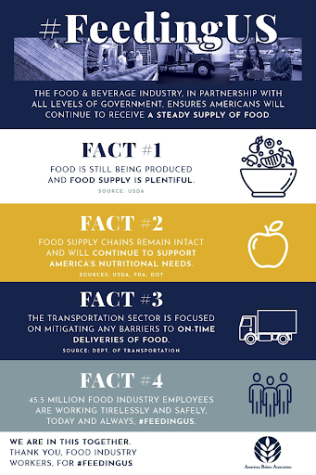Out of stock, out of sight

Empty shelves at the Albertsons on North Desert Boulevard in El Paso, Texas. According to Feeding America, the food insecurity rate in El Paso County is 14.6%.
February 4, 2022
Since the emergence of the COVID-19 pandemic in March 2020, supply shortages have increased in stores across the United States.
During the first wave of COVID-19 in 2020, shoppers were struggling to find cleaning products such as Clorox wipes, tissues, toilet paper, and paper towels.
Two years later, as the Omicron variant surges across the nation, supply shortages are hitting grocery stores, restaurants, and even clothing stores.
According to the Consumer Brands Association, out-of-stock levels at grocery stores are running at 15% and 12% at retail stores.
Out-of-stock levels have increased during the pandemic, considering that regular out-of-stock levels are 7-10%.
The recent supply shortages may continue to strain stores for the foreseeable future, potentially leading to increased prices, purchase limits, and empty shelves.
Additional circumstances
Supply chain issues have arisen due to multiple factors, such as factory shutdowns, increased shipping prices, and crowded shipping ports.
Furthermore, businesses plagued by labor shortages are short-staffed and look to offer incentives for new employees.
A locally-owned grocery store in El Paso, Texas, Westway Food Store, is facing supply shortages due to a lack of truck drivers available at their manufacturer in Amarillo, Texas.
In an interview with KDBC CBS4, Supervisor of Westway Food Store, Angel Santillanes, said, “There’s some stuff that takes seven months to come in.”
Most recently, winter storms are hitting eastern parts of the United States, shutting down highways, and further disrupting the supply chain.
Empty shelves
Today, grocery shortages range from non-perishable products such as beans and pasta to products with a limited shelf life, such as fresh fruit and vegetables.
Similar to March 2020, some grocery stores are placing a purchase limit on paper products that are in high demand.
Loretto freshman Melania Martinez said, “When I go to Target, I often see milk missing and also some cleaning supplies.”
Editor of the Supermarket Guru website, Phil Lempert, said growers are yielding less corn and soy to feed farm animals, leading to a decreased availability of meat, eggs, and dairy products.
Loretto senior Ann Johny said, “[At] RV International, sometimes things are out of stock mainly because of shipping troubles.
Indian chips and snacks are sometimes out of stock because of certain problems in India or places in the US that ship to this store.
There are also a lack of Indians here, so this place isn’t really a priority.”
Food banks
For food banks, the pandemic has challenged their ability to help the community.
According to Feeding America, food banks across the country are serving 55% more people than before the pandemic.
Despite the increase of people in need, food banks have been receiving fewer volunteers throughout the pandemic.
CEO of El Pasoans Fighting Hunger Food Bank, Susan Goodell, said, “We really need volunteers to come out so that we can open up multiple distribution lines and make sure that everybody that ends up in our line gets fed.”
The El Pasoans Fighting Hunger Food Bank is committed to following safety guidelines while welcoming volunteers to assist in cleaning, sorting, boxing, and distributing food.
Shopping responsibly
Considering the supply chain shortage, products may not be available, or purchasing limits may be enforced in grocery stores.

Mindful shopping may be a determining factor for the supply chain issues in America.
Vice President of Research for the Consumer Brands Association, Katie Denis, said, “If people can buy what they need, and only what they need, we’ll have enough.”
Although some grocery stores are raising prices, many companies offer lower-priced alternatives to name-brand products.
The effects of COVID-19 were unexpected and are lingering almost two years after the emergence of the pandemic in the United States.
It is unknown how long the supply chain issues will last and whether or not it will be the new normal.




